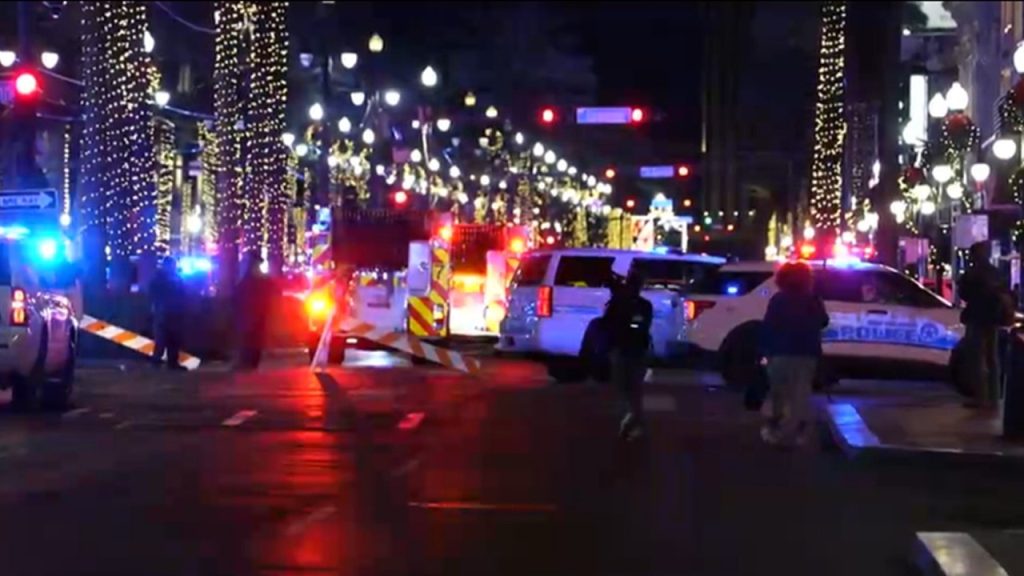The vibrant New Year’s Eve celebrations on Bourbon Street in New Orleans took a tragic turn in the early hours of Wednesday morning when a vehicle plowed into a crowd of revelers, leaving a scene of carnage and chaos. The incident, which occurred around 3:15 a.m. at the intersection of Bourbon Street and Iberville, claimed the lives of at least ten people and injured dozens more. According to initial reports, the driver, after crashing into the crowd, exited the vehicle and fired a weapon, further amplifying the terror and confusion. The intersection, typically bustling with festive energy, transformed into a scene of emergency response, with a large police presence and EMS personnel working tirelessly to attend to the injured.
The immediate aftermath saw roughly thirty injured individuals transported to five hospitals across the city. The severity of the injuries varied, and medical teams worked diligently to provide necessary care. New Orleans Mayor LaToya Cantrell, in a Wednesday morning briefing, initially labeled the incident a “terrorist attack.” However, this assertion was quickly countered by FBI agents present at the scene, who stated that such a classification had not yet been confirmed. The conflicting statements underscored the evolving nature of the investigation and the need for a thorough examination of the evidence before drawing definitive conclusions. The status of the suspect remained unclear in the initial hours following the attack, adding another layer of complexity to the unfolding situation.
Adding to the city’s woes, separate shootings occurred near a New Orleans parade route, further contributing to the atmosphere of violence and fear. These shootings resulted in two fatalities and left ten individuals wounded. While seemingly unrelated to the Bourbon Street incident, these shootings further strained the city’s emergency response resources and heightened the sense of unease. The combined impact of these violent events cast a pall over the New Year’s celebrations and left the city grappling with the aftermath of tragedy.
In preparation for the New Year’s Eve festivities and the upcoming Sugar Bowl, the New Orleans Police Department had implemented heightened security measures. These included deploying 300 additional officers from across the state, increasing the visibility of marked and unmarked police vehicles, and deploying officers on foot, bike, and horseback. NOPD Superintendent Anne E. Kirkpatrick had emphasized the importance of these measures in ensuring public safety, providing crowd control, and enabling rapid response to any incidents. Despite these precautions, the tragic events on Bourbon Street highlighted the challenges of maintaining security in crowded public spaces during large-scale events.
Louisiana Governor Jeff Landry issued a statement expressing his condolences and urging those near the scene to avoid the area. The statement reflected the shock and grief experienced by the community in the wake of the tragedy. As the investigation unfolded, the focus shifted to determining the motive behind the attack and gathering evidence to piece together the sequence of events that led to such devastation. The incident served as a stark reminder of the vulnerability of public gatherings and the ongoing need for vigilance and preparedness.
The Bourbon Street incident, with its significant loss of life and numerous injuries, left a deep scar on the city of New Orleans. Beyond the immediate impact, the incident raised questions about security protocols for large public events and the challenges of preventing such tragedies. The investigation into the attack remained ongoing, with authorities working to uncover the full details and bring those responsible to justice. The healing process for the city and its residents will undoubtedly be long and challenging, as they grapple with the emotional and psychological impact of the tragic events that unfolded on New Year’s Eve.

